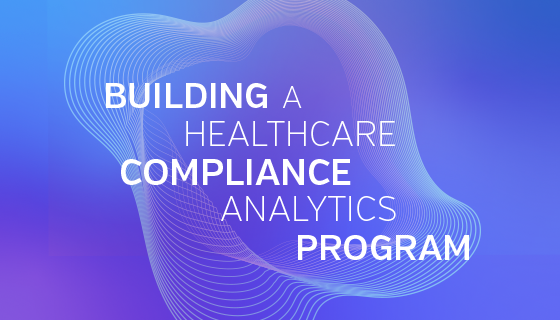Share this

Part Two: Engage Leadership and Build Your Team
by Kira Caban, Director of Communications, Protenus on December 14, 2020
Healthcare compliance analytics leverages AI to provide compliance professionals with the tools they need to maintain a culture of compliance in a resource-constrained environment, while also transitioning their current compliance program from one that is reactive to one that is proactive with a focus on prevention.
In order for health systems to build a compliance analytics program that will reduce risk and increase efficiency, they must have a team of people who represent stakeholders from across the organization who are empowered to make decisions that will improve and elevate the compliance program.
An important component of the compliance analytics team is to have the hospital’s senior leadership invested in creating and supporting an effective, efficient, workable program. Executive buy-in and ongoing support are critical to ensure that compliance is seen and recognized as an institutional priority.
Once leadership support is identified, a champion who “owns” the program must be identified. The champion advocates for change, identifies and recruits strategic team members, and ensures proper execution of the compliance program. This champion may be a leader in the compliance office, for example, or someone who leads current compliance or auditing efforts.
The compliance team will be able to identify which staff members in other departments are central to their work and are most likely to be interested and able to support the healthcare compliance analytics program. However the team decides to approach the development of the program, a champion is essential to advocate for a new approach to compliance, especially one that moves to a new generation of technology and is a game-changer for other hospital systems that have deployed it.
As a starting point, below is a list of the roles or teams that should be included in reviewing the current compliance program and moving toward a compliance analytics program based on their subject matter expertise and their roles within the organization.
- Compliance Office
- Health Information Management (HIM)
- Human Resources (HR)
- Information Systems
- Legal Department
- Risk Management
- Security
The Building a Healthcare Compliance Analytics Program white paper details how each of these teams and internal stakeholders can contribute to the success of the overall program. These team members can ensure a well-deployed compliance analytics program will allow your compliance teams to do more with less, especially in a resource constrained environment.
Download our Building a Healthcare Compliance Analytics Program white paper to learn how to build a robust compliance program for your organization.
Share this
- December 1, 2024 (3)
- November 1, 2024 (1)
- October 1, 2024 (2)
- September 1, 2024 (1)
- August 1, 2024 (1)
- July 1, 2024 (1)
- June 1, 2024 (1)
- May 1, 2024 (1)
- March 1, 2024 (2)
- February 1, 2024 (3)
- January 1, 2024 (1)
- December 1, 2023 (1)
- November 1, 2023 (3)
- October 1, 2023 (3)
- September 1, 2023 (1)
- August 1, 2023 (1)
- July 1, 2023 (2)
- April 1, 2023 (1)
- March 1, 2023 (1)
- February 1, 2023 (1)
- December 1, 2022 (3)
- November 1, 2022 (3)
- October 1, 2022 (1)
- September 1, 2022 (1)
- August 1, 2022 (2)
- June 1, 2022 (4)
- May 1, 2022 (5)
- April 1, 2022 (1)
- March 1, 2022 (4)
- February 1, 2022 (3)
- November 1, 2021 (2)
- October 1, 2021 (3)
- September 1, 2021 (3)
- August 1, 2021 (3)
- July 1, 2021 (4)
- June 1, 2021 (2)
- May 1, 2021 (2)
- April 1, 2021 (2)
- March 1, 2021 (5)
- February 1, 2021 (1)
- January 1, 2021 (1)
- December 1, 2020 (1)
- November 1, 2020 (2)
- October 1, 2020 (2)
- September 1, 2020 (3)
- August 1, 2020 (2)
- July 1, 2020 (2)
- June 1, 2020 (6)
- May 1, 2020 (3)
- April 1, 2020 (4)
- March 1, 2020 (2)
- February 1, 2020 (4)
- January 1, 2020 (2)
- December 1, 2019 (2)
- November 1, 2019 (1)
- October 1, 2019 (1)
- September 1, 2019 (1)
- August 1, 2019 (1)
- June 1, 2019 (1)
- April 1, 2019 (1)
- February 1, 2019 (1)
- January 1, 2019 (1)
- December 1, 2018 (2)
- November 1, 2018 (2)
- October 1, 2018 (2)
- September 1, 2018 (3)
- August 1, 2018 (1)
- July 1, 2018 (2)
- June 1, 2018 (2)
- May 1, 2018 (1)
- April 1, 2018 (1)
- March 1, 2018 (2)
- February 1, 2018 (6)
- January 1, 2018 (2)
- September 1, 2017 (2)
- August 1, 2017 (2)
- June 1, 2017 (2)
- May 1, 2017 (1)
- April 1, 2017 (1)
- March 1, 2017 (2)
- February 1, 2017 (5)
- January 1, 2017 (2)
- December 1, 2016 (3)
- November 1, 2016 (5)
- October 1, 2016 (4)
- September 1, 2016 (8)
- August 1, 2016 (4)
- July 1, 2016 (4)
Subscribe by email
You May Also Like

Conserving Resources with Compliance Analytics: A 5-Step Implementation Guide

Enabling Greater Healthcare Efficiency with Protenus AI Technology

.png?width=1000&height=140&name=Bluesight%20%2B%20Protenus%20Logo%20%20(1).png)
